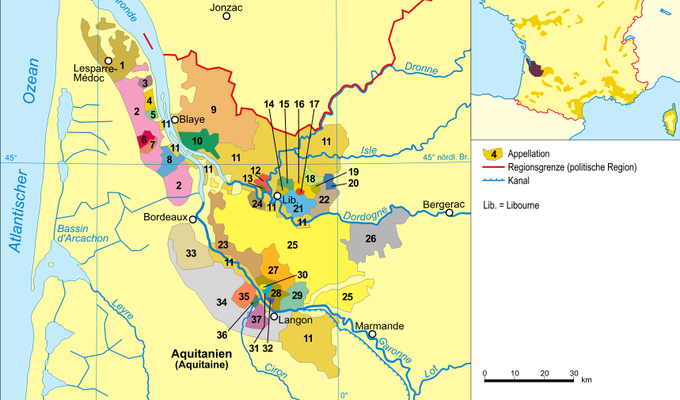Puisseguin-Saint-Émilion is an Appellation d'origine contrôlée for wine in the Bordeaux wine region of France, where it is situated in the Libourne subregion on the right bank of the Dordogne. It was granted AOC status on 14 November 1936, and the AOC designation granted to the wines which have been harvested on the land of the Puisseguin commune. 753 hectares of vine planted areas have belonged to the appellation in 2005, with a production of 34,648 hl.
Puisseguin-Saint-Émilion only produces red wine, and nearly all of the grape varieties from Bordeaux can be and are used, such as Cabernet sauvignon, Cabernet franc, Merlot, Côt, etc., although it is Merlot that is used most often.
Like the vineyards of Montagne, the vineyards of Puisseguin are located in the area northeast of Saint-Émilion on the right bank of the Barbanne. Together with Lussac-Saint-Émilion, Saint-Georges-Saint-Émilion and Montagne-Saint-Émilion, it is one of the "satellites" of Saint-Émilion.
The base yield is fixed at 45 hl/hectare with a limit of 20%. Before the chaptalization and concentration process, the must (the residue of grapes, after the juice has been extracted) must contain a minimum of 187g/L of natural sugar. After fermentation, the wine must have a minimum alcohol level of 11% vol.
